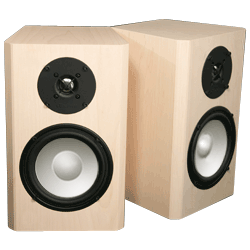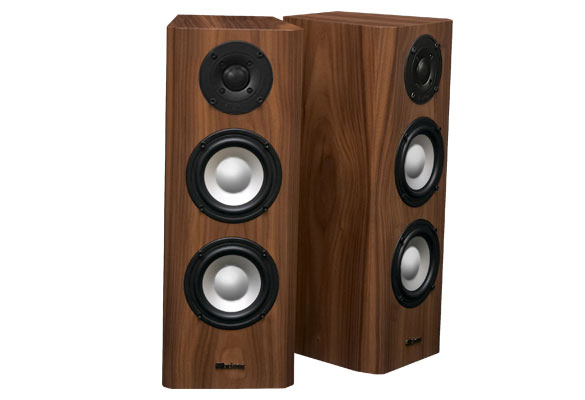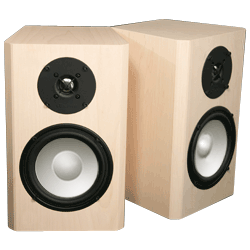A recent newcomer’s post on Axiom’s forums raised the question of loudspeaker tonal balance, specifically the relative “sound” of Axiom’s M22 versus the M3 bookshelf speakers.

My answer pointed out that the M3 gave the impression of having more bass output than the M22, partly because of the M3’s bass hump around 100 Hz. Another forum regular (Jakewash) gave another reason for the M3’s bass sounding more prominent, noting:
“The difference is whether or not you like your midrange sound equal/upfront to the bass (M22) or laid back (M3). The M3 actually has a midrange dip that makes the upper bass sound more prominent than the midrange giving the illusion of more bass when in fact it is less midrange.”
That’s also true, as Axiom’s founder and chief designer Ian Colquhoun once explained to me, saying that the 6.5-inch woofer he chose for the M3 uses a “mechanical/acoustical roll-off” (no crossover components on the woofer) and because the larger 6.5-inch woofer cone can’t play as smoothly or as high into the midrange as the 5.25-inch woofers on the M22, the M3’s midrange output sags a bit and is lower than the M22’s, so the M3’s bass output is heard as greater. Conversely, the M22’s smaller woofers work more smoothly and have greater output into the midrange; hence we hear the M22’s midrange as having more detail and clarity.

Getting loudspeaker tone quality exactly right is really a matter of balance. Even slight variations in the relative contribution of bass, midrange and treble may dramatically alter our impressions of a loudspeaker. If you have too much bass output relative to the midrange, the mids and highs may seem a bit recessed or muted and less detailed. If a speaker is shy of bass, its midrange becomes more noticeable and we may describe its sound as “middy” or “thin” (lacking bass), because the midrange and treble are too prominent.
What we’re really talking about is a speaker’s relative frequency response—its response to every musical frequency. The goal is to have a smooth and equal response to all the sounds in the bass, midrange and treble that undamaged human ears can hear. We can measure that frequency response very precisely in Axiom’s large anechoic chamber and describe it and show it on a graph, with the deviations away from perfect response noted by the bumps and squiggles in the response curve and described with an overall plus- or-minus-so-many-dB rating. But describing “musical balance” in layman’s terms is a lot easier to understand, hence we use terms for the M3 as being “laid-back” in its midrange response, or having a “warm” bass output. Likewise, the M22’s “detailed and articulate” midrange is really a function of its having a smoother and more linear midrange response than the M3.
When a loudspeaker gets virtually every frequency right and in just the right balance—the Axiom M80, for example—we techies describe its sound as well-balanced, wide-range and “neutral” or “uncolored,” meaning that the speaker doesn’t unduly emphasize or favor one frequency range over another. Another tech term is “linear,” which is just another way of saying a speaker has a very smooth frequency response with everything in balance.






